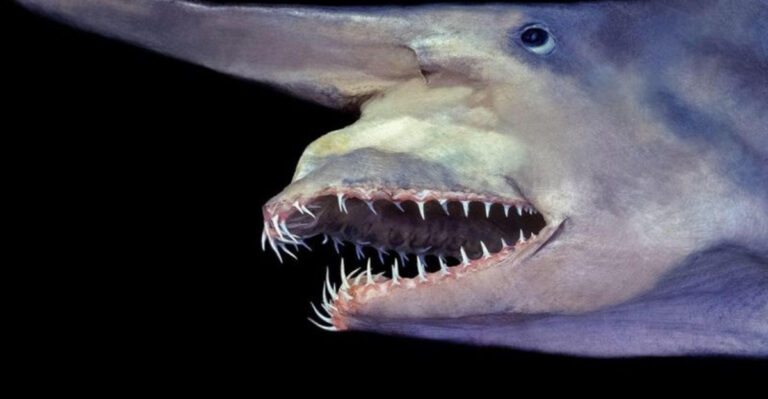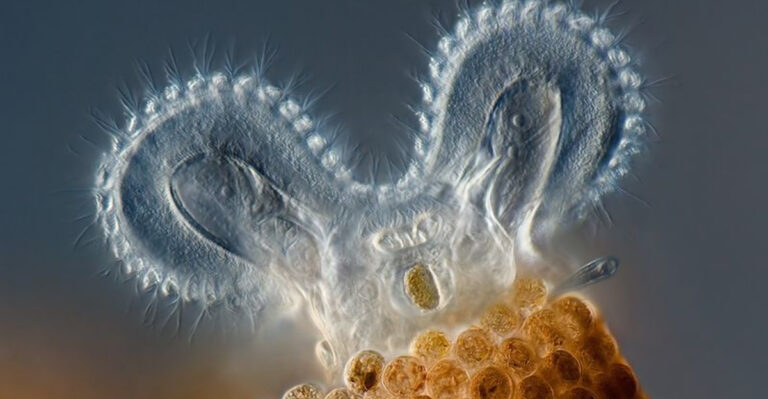12 Amazing Creatures That Call Coral Reefs Home

Dive into the colorful world of coral reefs, where some of the most amazing and diverse marine creatures call home!
These underwater wonders are bursting with life, offering a peek into the intricate beauty of marine ecosystems.
So grab your snorkel, put on your fins, and let’s dive into an unforgettable adventure beneath the waves!
1. Nudibranch

Nudibranchs are one of the most colorful and diverse groups of marine mollusks found in coral reefs. These sea slugs dazzle with a variety of patterns and hues, earning them nicknames like “marine jewels.”
Despite their delicate appearance, they have evolved fascinating defense mechanisms. Some species can incorporate toxins from their prey into their own bodies, deterring predators.
Observing nudibranchs requires a keen eye, as their small size often hides them within coral branches. Each species offers a unique mosaic of colors, making them a favorite among marine photographers.
2. Clownfish

Clownfish, made famous by a popular animated movie, are a colorful and charming species found in the warm waters of the Indian and Pacific Oceans.
Recognizable by their bright orange hue and white bands, clownfish have an incredible symbiotic relationship with sea anemones, where both benefit: the anemone offers protection, and the clownfish keeps it clean by eating parasites.
These little fish are also highly territorial, living in small groups within anemone colonies, with a strict hierarchy led by a dominant female – who can be replaced by the largest male if she dies.
Omnivorous, clownfish help balance the reef ecosystem by feeding on algae, plankton, and small crustaceans.
3. Octopus

The octopus is the ultimate shape-shifter of the ocean, blending perfectly into its surroundings with the ability to change both color and texture.
Thanks to special skin cells called chromatophores, they can vanish in the blink of an eye, making them nearly invisible to both predators and prey. But their talents don’t stop at camouflage – octopuses are also incredibly intelligent, solving puzzles, using tools, and even escaping enclosures to find food or shelter.
They play a vital role in maintaining reef health by keeping the populations of crabs, shrimp, and small fish in check.
4. Moray Eel

Moray eels are among the reef’s more mysterious residents, with their long, snake-like bodies and sharp teeth giving them a fearsome look. But don’t be fooled—these fascinating creatures are vital to the coral reef ecosystem.
They typically hang out in crevices and holes, ambushing fish and crustaceans with impressive precision. What’s really cool is how moray eels sometimes team up with other predators, like groupers, to hunt more effectively—showing just how intricate the reef’s relationships are.
Despite their intimidating appearance, moray eels aren’t aggressive unless provoked, and spotting one peeking from its hiding spot is a thrilling experience for divers and snorkelers.
5. Parrotfish

Parrotfish are some of the most vibrant and fascinating creatures in coral reefs, with about 95 species known for their bright colors and beak-like mouths.
These mouths are perfect for scraping algae off corals and rocks, keeping the reef healthy by preventing algal overgrowth that could smother corals. What’s even more amazing?
Parrotfish can change sex during their lives – many are born female and become male as they mature, helping maintain the balance of their populations.
They also produce sand by eating hard calcium carbonate from coral, turning it into the sand that forms beaches. With their dazzling colors and unique role in the reef, parrotfish are essential to the health of coral ecosystems, making them a vital species to protect.
6. Sea Horse
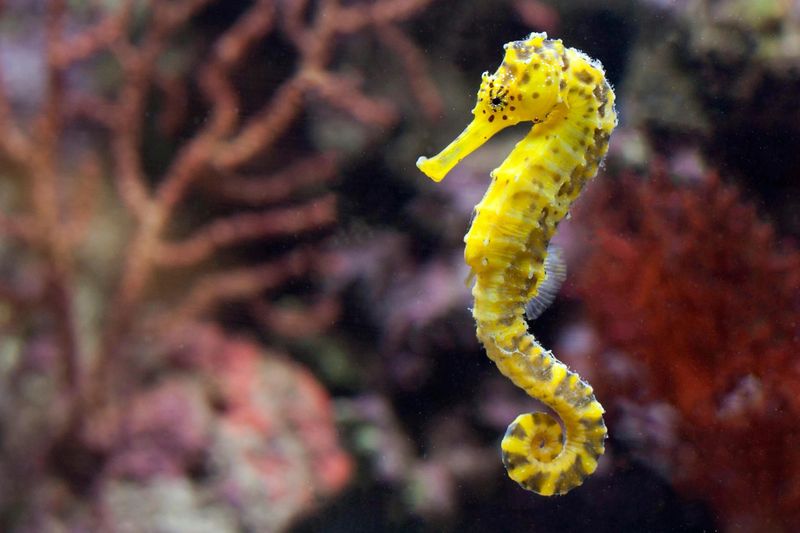
Seahorses are among the ocean’s most magical creatures, instantly recognized for their horse-like heads and curled tails.
These little guys are camouflage experts, blending seamlessly with coral and seagrass to hide from predators and sneak up on prey.
But the real showstopper? The male seahorse carries the babies! After the female transfers her eggs into his pouch, he fertilizes and carries them until they hatch—talk about role reversal in the animal kingdom!
These tiny wonders munch on plankton and crustaceans, and spotting one is like finding a hidden gem while snorkeling. Protecting seahorses and their homes is key to keeping our coral reefs healthy and thriving.
7. Lionfish
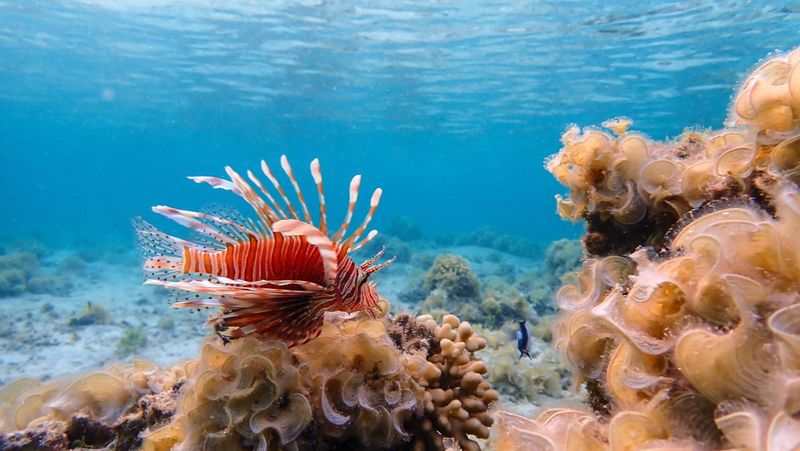
Lionfish are undeniably stunning with their vibrant colors and elegant, fan-like fins, but don’t let their beauty fool you—they’re also pretty dangerous!
Native to the Indo-Pacific, these venomous creatures have become invasive in places like the Caribbean and Atlantic, threatening local marine life.
With a hunger for small fish and invertebrates, they corner prey with their fins and strike with incredible speed, causing serious disruption to the reef ecosystem.
Despite their invasiveness, divers still flock to see them, mesmerized by their graceful movements and bold patterns.
8. Manta Ray
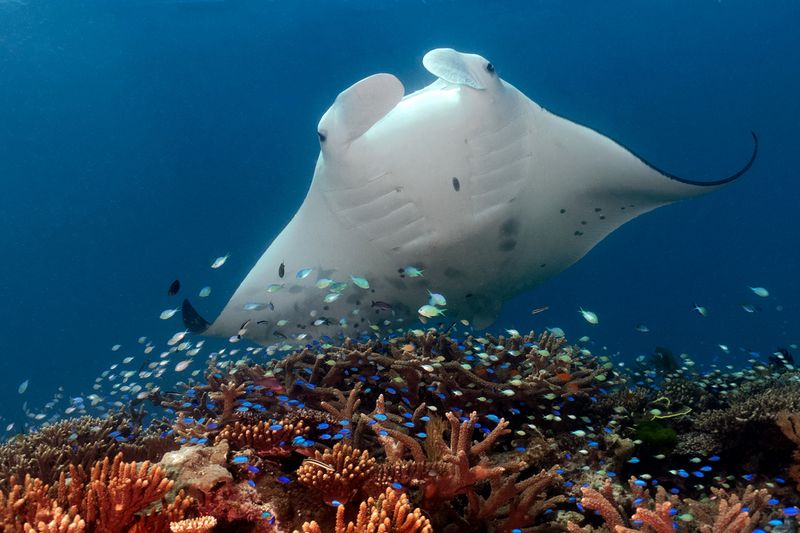
Manta rays are the ocean’s gentle giants, with wingspans reaching up to 29 feet, gliding through the water with mesmerizing elegance. Found near coral reefs, these graceful creatures feed on plankton and small fish, and their presence is a sign of a thriving reef ecosystem.
Despite their size, manta rays are harmless to humans and use specialized gill plates to filter their food. Known for their intelligence, they display fascinating behaviors like coordinated swimming, social interactions, and even leaping out of the water, possibly to communicate or play.
Sadly, these majestic creatures face threats from overfishing, pollution, and habitat destruction, making conservation efforts vital.
If you’re lucky enough to swim with a manta ray, it’s an unforgettable experience that offers a window into the peaceful, interconnected world of the ocean.
9. Starfish
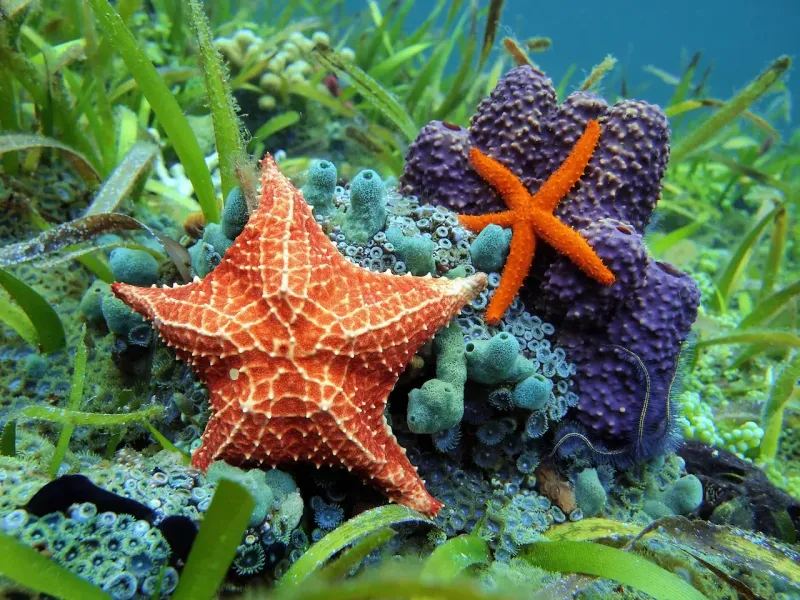
One of the coolest creatures you’ll find in coral reefs, starfish (or sea stars) are a sight to behold with their stunning shapes, colors, and unique charm.
With their trademark five arms—though some have more—these slow movers use their water vascular system to navigate and hunt for prey.
They’re opportunistic feeders, munching on everything from mollusks to corals, and while some, like the crown-of-thorns starfish, can cause a bit of damage, they’re essential in keeping the reef ecosystem balanced.
Watching them slowly crawl across the ocean floor is a treat for anyone lucky enough to dive or snorkel. Just remember, while they’re harmless to us, it’s always best to admire these vibrant beauties from a distance and keep their natural rhythm undisturbed!
10. Sea Turtle
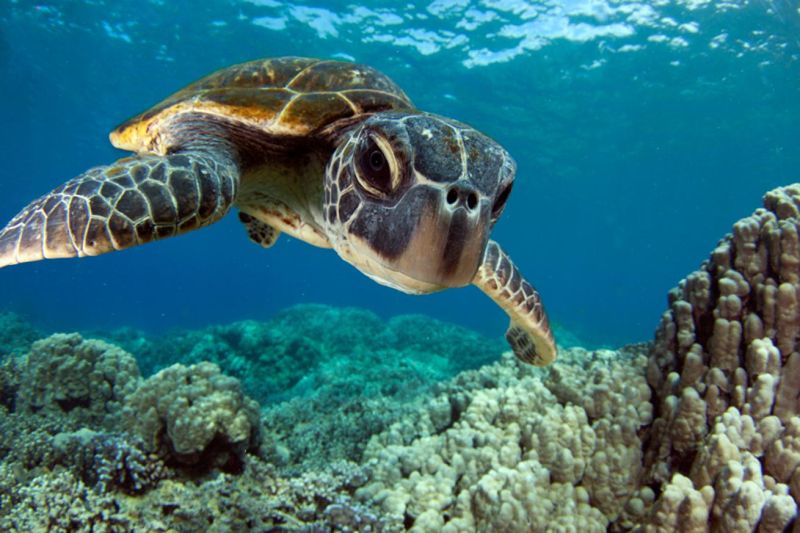
Sea turtles are true ocean veterans, having navigated the seas for over 100 million years.
These majestic creatures are often spotted gliding gracefully through coral reefs, where they play a key role in maintaining the ecosystem’s health by feeding on sponges, seagrasses, and algae.
With seven species of sea turtles, many make long migrations, traveling thousands of miles between feeding grounds and nesting sites—an incredible feat of navigation guided by the Earth’s magnetic field.
Sadly, they face threats like habitat destruction, plastic pollution, and illegal hunting, which is why conservation efforts are so vital.
11. Reef Shark

Reef sharks are the ultimate predators of the coral reef, sleek, agile, and essential to maintaining the health of these vibrant ecosystems.
Found in warm, shallow waters, these sharks are expert hunters with streamlined bodies and sharp senses, keeping populations of fish, octopuses, and crustaceans in check.
With species like the blacktip, whitetip, and Caribbean reef sharks, each has its own personality—blacktips, for example, are often seen gliding through the shallows with their distinctive black-tipped fins.
Though they may seem intimidating, reef sharks are generally curious, not aggressive, making them fascinating creatures to encounter while diving or snorkeling.
12. Christmas Tree Worm

The Christmas Tree Worm is a small but striking creature known for its spiral-shaped plumes resembling a festive tree. Found on coral reefs worldwide, these worms are often a photographer’s delight due to their vibrant colors.
They primarily use their plumes for respiration and feeding on microscopic plankton. These structures allow them to capture food particles from the water, providing energy for their sedentary lifestyle.
Christmas Tree Worms are incredibly sensitive to touch and can retract into their burrows within the coral at the slightest disturbance, making them a fascinating subject for underwater observation.


